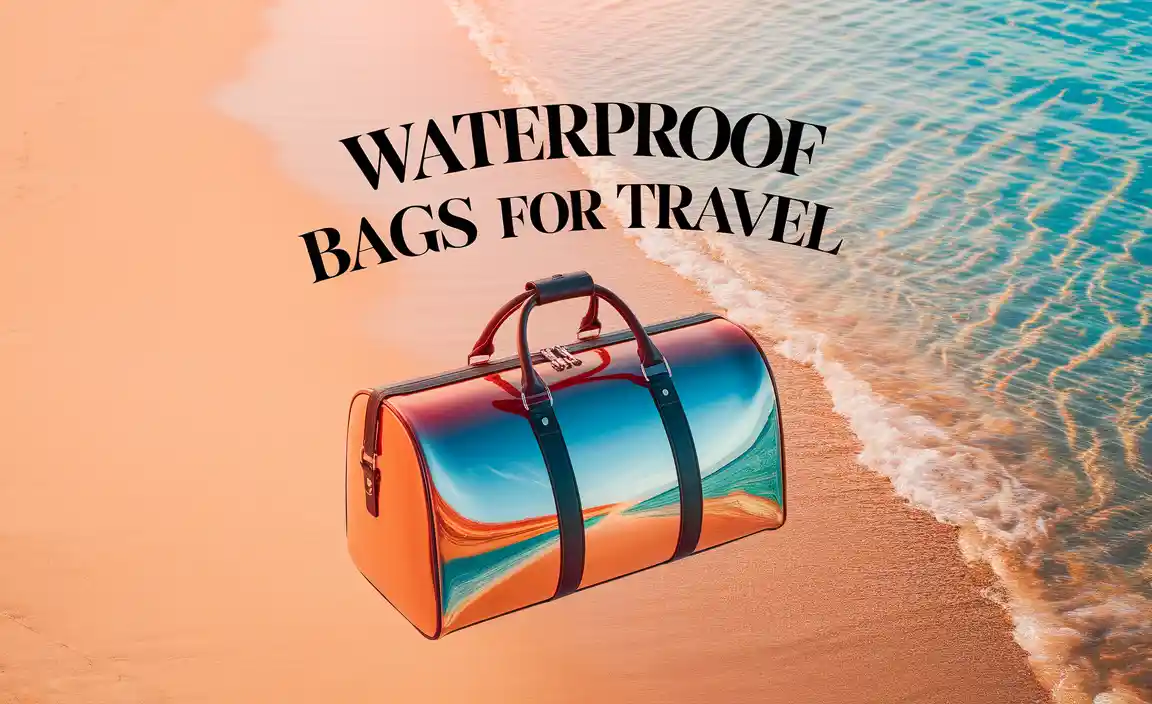Planning a Bergen winter trip requires smart packing and preparation for cold, wet weather. Focus on waterproof gear, layers, and comfortable footwear. Embrace the cozy atmosphere with indoor activities and enjoy the unique charm of Bergen in the snowy season for a stress-free adventure.
Bergen, Norway, in winter is a truly magical experience. Imagine snow-dusted fjords, cozy cafes, and the twinkling lights of Bryggen. But if you’re new to traveling in such a climate, the thought of a Bergen winter trip might seem a little daunting. Will you be too cold? What should you pack? How do you make the most of short daylight hours? Don’t worry! Planning a winter trip to Bergen is simpler than you think, and with a few essential tips, you can ensure a comfortable, enjoyable, and unforgettable journey. We’ll break down everything you need to know, from packing the perfect layers to discovering the best indoor escapes when the weather calls for it. Get ready to embrace the hygge and enjoy Bergen in its most enchanting season!
Why a Bergen Winter Trip? Embracing the Magic
While many dream of Norway’s summer fjords, a Bergen winter trip offers a distinct and often more serene beauty. The city, famous for its UNESCO World Heritage site Bryggen wharf, transforms into a winter wonderland. Snowfall, though variable, can blanket the surrounding mountains, creating breathtaking vistas. The crisp, cold air is invigorating, and the low-lying winter sun casts a beautiful, soft light across the landscape, perfect for photographers. It’s also a fantastic time to experience local culture without the peak summer crowds, enjoying a more authentic and intimate feel of the city.
Your Bergen Winter Trip Packing Essentials
Packing for Bergen in winter is all about layering and staying dry. The weather can change quickly, with rain, snow, and wind all common. Focusing on versatile items that work together is key to staying comfortable and warm.
The Layering System: Your Secret Weapon
This is the golden rule for any cold-weather destination, and Bergen is no exception. Instead of one bulky coat, think in thirds:
- Base Layer: This layer sits directly against your skin. Its job is to wick away moisture (sweat) to keep you dry and warm. Avoid cotton, as it holds moisture. Opt for merino wool or synthetic fabrics.
- Mid Layer: This is your insulation layer. It traps body heat to keep you warm. Fleece jackets, down vests, or wool sweaters are excellent choices. You can add or remove these layers depending on how cold it is.
- Outer Layer: This is your protection against the elements. A waterproof AND windproof jacket and trousers are crucial. Look for Gore-Tex or similar breathable, waterproof materials. A hood is essential for wind and rain protection.
Footwear: Staying Dry and Comfortable on Your Feet
Your feet will thank you for bringing the right shoes. Cold, wet feet can ruin any trip.
- Waterproof Boots: This is non-negotiable. Comfortable, insulated, waterproof boots with good grip are essential for walking on potentially icy or wet streets and exploring. Ensure they have enough room for thicker socks.
- Warm Socks: Pack several pairs of wool or synthetic socks. They will provide warmth and cushioning.
- Comfortable Indoor Shoes: For when you’re back at your hotel or a cozy cafe, a pair of comfortable, lightweight shoes or slippers will be a welcome relief.
Don’t Forget These Accessories!
These small items make a big difference in your overall comfort.
- Hat: A warm, woolen hat that covers your ears is vital.
- Gloves or Mittens: Waterproof and insulated gloves are best. Mittens are generally warmer than gloves as they keep your fingers together.
- Scarf or Neck Gaiter: A scarf or a neck gaiter (a tubular scarf) will protect your neck and face from the wind and cold.
- Thermals (Optional but Recommended): For very cold days or if you plan on spending extended time outdoors, thermal long johns and tops are excellent for an extra layer of warmth.
- Small Backpack: Useful for carrying your layers, water bottle, snacks, and camera throughout the day.
Daily Outfit Examples for Bergen Winter
Here’s how to put it all together. Remember you can adapt based on the day’s forecast.
| Activity | Base Layer | Mid Layer | Outer Layer | Legs | Footwear | Accessories |
|---|---|---|---|---|---|---|
| Exploring Bryggen & City Center | Merino wool t-shirt | Fleece jacket | Waterproof, windproof jacket | Waterproof trousers or jeans with thermal leggings | Waterproof, insulated boots | Warm hat, scarf, waterproof gloves |
| Day trip to a Fjord (e.g., Norway in a Nutshell) | Thermal top and bottoms | Wool sweater or down vest | Heavy-duty waterproof and windproof jacket | Waterproof trousers (essential) | Sturdy waterproof boots with good grip | Warm hat, thick scarf, waterproof mittens |
| Cozy cafe/museum visit | Lightweight thermal top | Light sweater or cardigan | Lightweight, packable waterproof shell (optional if not much walking between) | Comfortable trousers or jeans | Comfortable waterproof shoes or boots | Scarf kept handy |
Navigating Bergen in Winter: Practical Tips
Beyond packing, knowing how to get around and what to expect will make your Bergen winter trip much smoother.
Getting Around
Bergen is a very walkable city, especially the central areas like Bryggen, the Fish Market, and the surrounding streets. However, when the weather is less cooperative, or you want to venture further afield, public transport is excellent:
- Buses: A comprehensive bus network covers the city and surrounding areas. Purchasing a Skyss travel card or using their app can be cost-effective for multiple journeys. Visit the Skyss official website for route information and ticketing.
- Light Rail (Bybanen): The Bybanen is a modern tram system that connects the city center to the airport and other suburbs. It’s efficient and comfortable.
- Ferries and Boats: For exploring the fjords, ferries are essential. Many tours depart from the harbor, offering spectacular winter scenery.
- Taxis: Readily available but can be expensive.
Daylight Hours: Making the Most of It
Winter in Bergen means shorter daylight hours. In December and January, the sun might only be up for 6-7 hours. Don’t let this deter you! It simply means planning your outdoor activities for the brightest part of the day and embracing the cozy atmosphere indoors during the darker hours.
Tip: Plan your outdoor sightseeing for late morning and early afternoon. Museums, art galleries, and cafes become even more inviting when it’s dark outside.
Embrace the Hygge: Food and Drink
Winter is the perfect time to indulge in Norway’s comforting cuisine and the concept of “hygge”—a feeling of coziness and contentment.
- Warm Drinks: Seek out cafes for a hot chocolate, coffee, or a traditional Norwegian “gløgg” (mulled wine).
- Hearty Meals: Enjoy traditional Norwegian dishes like “fårikål” (mutton and cabbage stew), “raspeballer” (potato dumplings), or fresh seafood.
- Bakeries: Bergen has wonderful bakeries. Treat yourself to a “skillingsbolle” (a cinnamon bun) and a warm drink.
Traveling With Children or Specific Adult Needs
If you’re traveling with young children or have specific adult care needs, comfort and preparedness are amplified. For instance, dealing with wet weather and longer travel times can be challenging. If you use adult diapers for comfort, discretion, or medical reasons, packing extra in a waterproof bag is wise. Similarly, for children, having easy access to spare clothing and comfort items is crucial. Consider waterproof outerwear for kids, and ensure any necessary personal care items, like travel-friendly adult diapers or child diapers, are easily accessible in a day bag.
A small, portable changing mat can also be a lifesaver when out and about with little ones, and discreet carrying pouches for adult diapers can provide peace of mind. Remember, the goal is always stress-free travel, so planning for these needs upfront ensures everyone can enjoy the experience.
Must-Do Winter Activities in Bergen
Even with shorter days, Bergen offers plenty to see and do:
1. Wander Through Bryggen
This historic wharf is even more atmospheric in winter. The colorful wooden buildings, dating back to the Hanseatic League, are a UNESCO World Heritage site. Duck into the shops, galleries, and cafes nestled within its narrow alleyways to escape the chill.
2. Ascend Mount Fløyen or Mount Ulriken
These iconic scenic viewpoints offer panoramic views of the city, fjords, and surrounding islands. The Fløibanen funicular is a quick and easy way to reach Mount Fløyen, while the Ulriken Cable Car takes you to Bergen’s highest city mountain for more dramatic vistas. Dress warmly – it’s always colder at the top!
3. Immerse Yourself in History: Hanseatic Museum
Learn about Bergen’s seafaring past and the powerful Hanseatic merchants who once dominated its trade. The museum complex includes the Schøtstuene, the old assembly rooms, offering a fascinating glimpse into history.
4. Explore Bergen’s Museums and Galleries
When the weather is rough, Bergen’s indoor attractions are perfect. Visit the KODE art museums (four buildings housing diverse collections), the Bryggens Museum (focusing on the history of Bryggen), or the Norwegian Maritime Museum.
5. Experience the Fish Market (Torget)
While smaller and less bustling than in summer, the fish market is still a vibrant spot. You can often find fresh seafood to try, local produce, and souvenirs. Some stalls offer warm seafood snacks perfect for a chilly day.
6. Embark on a Winter Fjord Cruise
Seeing the fjords in winter is a breathtaking experience. Many tours operate year-round, offering stunning, often snow-capped, scenery from a warm, comfortable boat. Consider a classic Norway in a Nutshell tour, which can be adapted for winter.
7. Cozy Up in a Cafe
Bergen excels at “koselig” (cozy) cafes. Spend an afternoon warming up with a coffee and a pastry, reading a book, or people-watching. It’s a quintessential Bergen winter experience.
Staying Safe and Healthy in the Cold
Winter travel requires a little extra attention to your well-being.
- Stay Hydrated: Even in the cold, it’s important to drink enough water.
- Protect Your Skin: Cold air can be drying. Use a good moisturizer and lip balm.
- Be Aware of Ice: Sidewalks can be slippery. Walk carefully and watch your step.
- Listen to Your Body: Don’t push yourself too hard in the cold. Take breaks indoors when needed.
- Have Emergency Contacts: Know the local emergency number (112 in Norway).
Budgeting for Your Bergen Winter Trip
Norway can be an expensive destination, but here are some tips for managing your budget during a winter trip:
- Accommodation: Look for deals outside the immediate city center or consider guesthouses and Airbnb. Booking in advance is often wise.
- Food: Prepare some of your own snacks and lunches. Supermarkets are great for this. Look for cafes rather than fine dining for more affordable meals.
- Activities: Prioritize your must-do activities. Many of Bergen’s beautiful sights, like Bryggen, are free to explore. Consider city passes if you plan on visiting many museums.
- Transportation: Utilize public transport extensively. Walking is also your best free option for exploring central Bergen.
- Travel During Shoulder Shoulder: While the core winter months (December-February) are popular, consider late November or early March for potentially lower prices and fewer crowds, while still enjoying wintery conditions.
Frequently Asked Questions About Bergen in Winter
What is the typical weather like in Bergen during winter?
Bergen’s winter weather is generally mild but wet and windy. Temperatures typically range from -2°C to 5°C (28°F to 41°F). Snowfall is common, especially in the surrounding mountains, but in the city, it can often be rain or sleet. Expect cloudy skies and shorter daylight hours.
Do I need to pack a heavy winter coat?
A heavy, insulated, waterproof, and windproof outer layer is essential. It should be warm enough for cold temperatures but also breathable. Layering with a good base and mid-layer allows you to adjust to changing conditions whether you’re out exploring or indoors.
Are the fjords accessible in winter?
Yes, many fjord tours and transportation options like the “Norway in a Nutshell” route operate year-round. Winter offers a unique, often dramatic, and less crowded perspective of the fjords, with snow-capped mountains adding to the scenery.
Is Bergen safe for solo travelers in winter?
Bergen is considered a very safe city for solo travelers. Like any destination, it’s wise to be aware of your surroundings, especially at night, and to take standard precautions. The locals are generally friendly and helpful.
What are the best indoor activities if the weather is bad?
Bergen has excellent indoor options, including the KODE art museums, the Hanseatic Museum and Schøtstuene, the Norwegian Maritime Museum, and the Aquarium. Cozy cafes, restaurants, and shopping areas also provide great refuges from the weather.
How much daylight can I expect in Bergen in winter?
Daylight hours are significantly reduced in Bergen during winter. In December and January, you can expect about 6 to 7 hours of daylight. Sunrise is typically around 9-10 am, and sunset is between 3-4 pm. Plan outdoor excursions accordingly.
What kind of shoes are best for walking around Bergen in winter?
Waterproof, insulated boots with good grip are crucial. The streets can be wet, icy, or snowy, so they need to provide warmth, keep your feet dry, and prevent slips. Comfortable walking shoes are suitable for indoor activities or if the weather is unexpectedly mild.
Planning Your Perfect Bergen Winter Getaway
A Bergen winter trip offers a unique blend of natural beauty, historical charm, and cozy experiences. By preparing for the elements with smart layering, waterproof gear, and comfortable footwear, you can navigate the crisp air and embrace the shorter days with confidence. Don’t let the winter weather deter you; instead, see it as an invitation to experience Bergen’s enchanting tranquility, explore its rich history without the summer crowds, and indulge in the comforting warmth of its cafes




